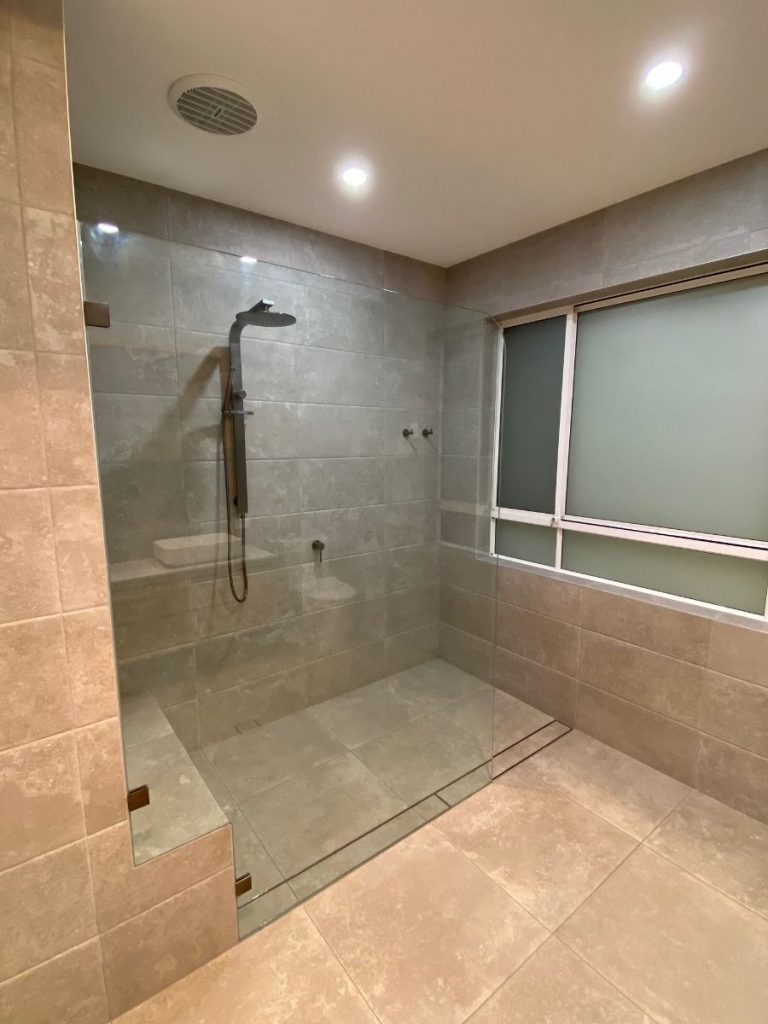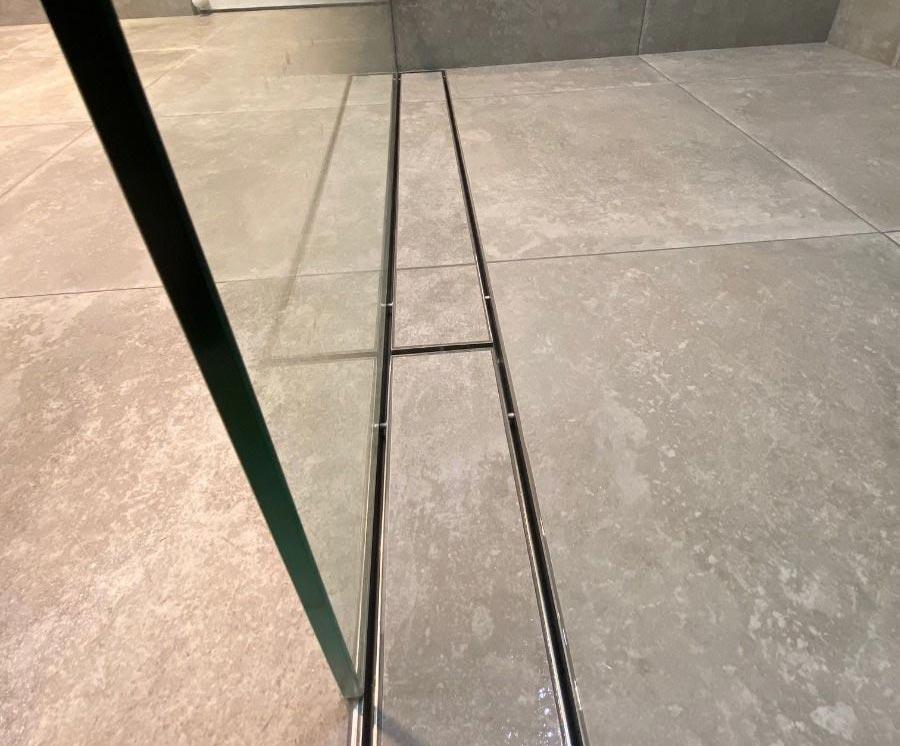Where should a linear shower grate be placed?
Installing a linear drain can be much simpler and faster than installing a point drain.
Point Drains
Traditional round central drains for showers, also known as point drains, are usually installed in the centre of the shower with floors sloping from all four sides into the middle, creating more work as more tiles are needing to be cut to angles to achieve the slope on all sides.
Linear Drain Location
A linear shower drain, or strip drain, can be best placed at the shower door wall or at the wall opposite. Linear drains should not be placed perpendicular to the shower door wall as it creates an uneven and unsafe surface. Placement is dependent on the slope requirements.
Although where you want to install your strip drain is a matter of personal preference, many tiles prefer to install at the base of the wall parallel to the shower entrance, as it is easier and faster, only requiring one slope or gradient. It can also be easier for the plumber as the waste plumbing is also normally installed next to the wall.
Hob or threshold

Using a linear strip drain can also be effective in doing away with the need for a shower hob, also known as the threshold as the linear drain can be installed to drain both from the shower and the rest of the bathroom, and would require 2 gradients. Still a simpler and faster option than a point drain install.
Removing the hob has many benefits including eliminating a trip hazard for elderly people, people who live with a disability, or experience reduced mobility.
Benefits
The benefits of most effective linear grate drain placement include:
- No need for a hob or threshold eliminating a trip hazard
- Only one or two gradients are required, reducing the need to cut tiles and angle tiles
- Depending on the location of your drain, linear strip drains can also be designed to withstand heavier weight loads from traffic
- Faster install results in lower labour costs and reduced install time
If you’re unsure of the best location for your strip drain, talk to our knowledgeable sales team to get advice on your specific project. Give the owners, Gary or Greg, a call today on 1300 308 893.

